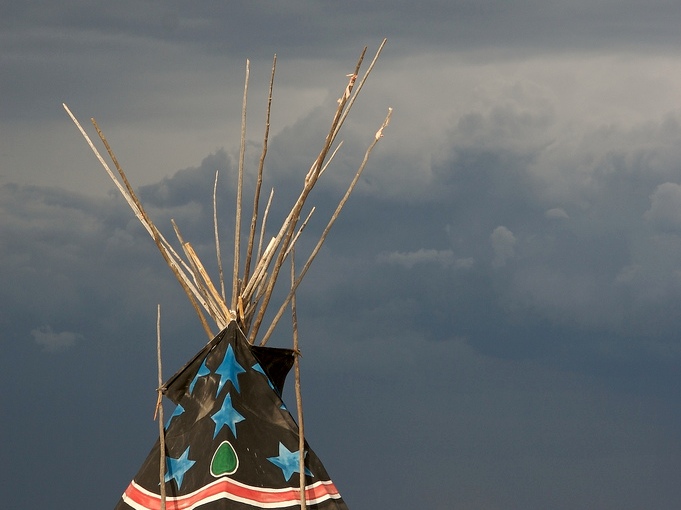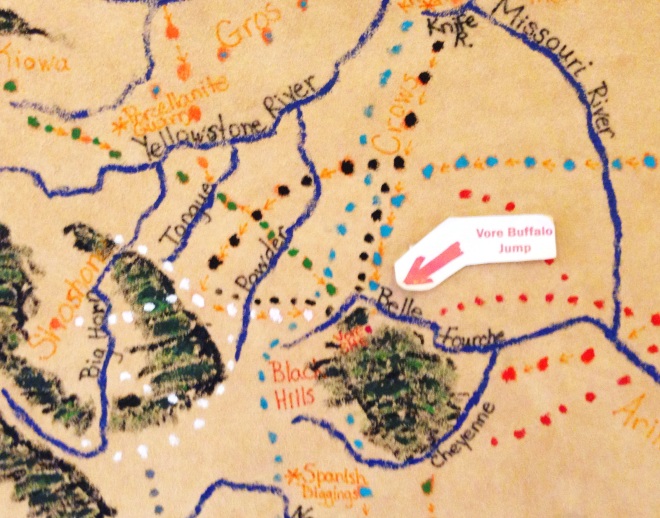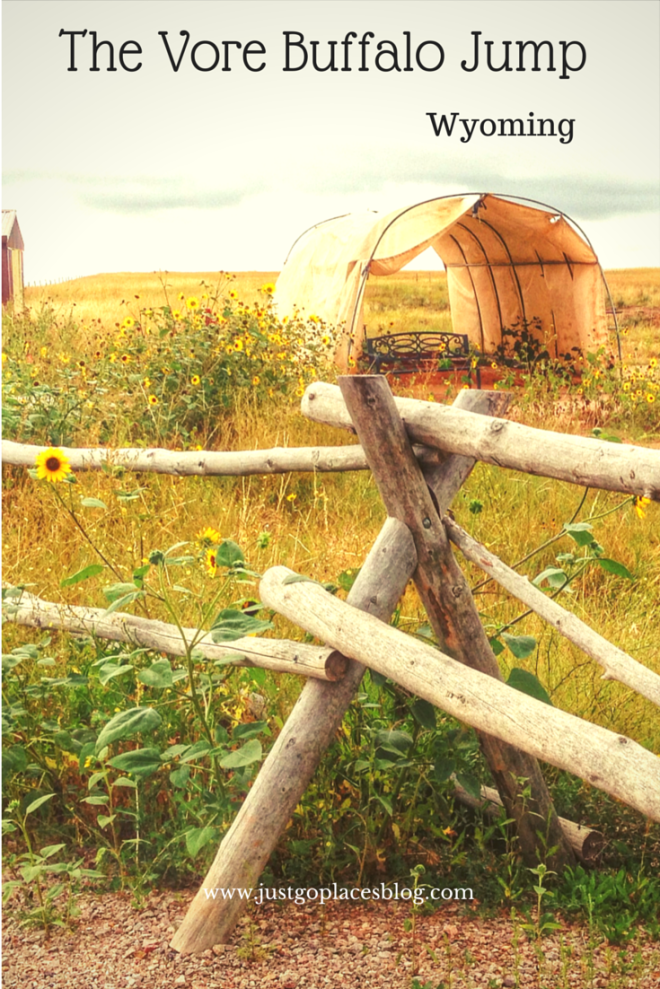In the 1970’s the engineers looking to extend interstate 90 West found a giant sinkhole on the Vore family lands. When they surveyed the sinkhole in order to fill it up with concrete, they found that it was a giant pit of bison remains. Needless to say, the engineers moved the interstate a little bit south and the archeologists set up camp.
The Vore sinkhole site is massive. Although only a small percentage of the pit has been excavated so far, archeologists expect to find the remnants of approximately 20,000 bison as well as the tools used to trap and hunt those bison.
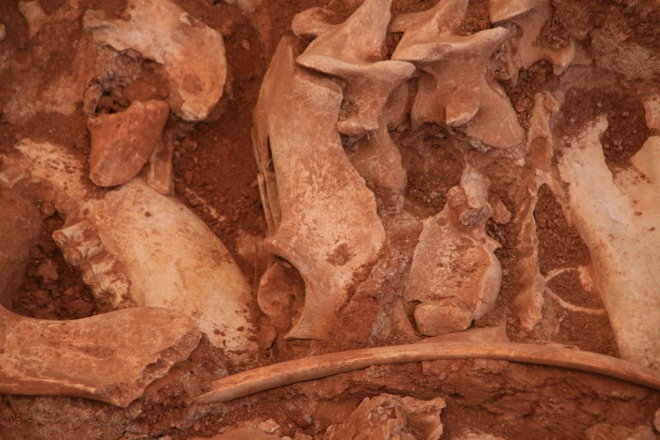
On our way to Devils Tower National Monument, we stopped by the Vore Buffalo Jump. This archeological site is well worth a quick stop to learn about how Native Americans lived in this area hundreds of years ago.
How To Hunt Bison Without Horses
The Vore Buffalo Jump was used by several tribes of Native Americans from the Great Plains for approximately 300 years from the 16th to the 18th centuries. Historically, this area would have had giant herds of bison roaming between the Great Plains and the Black Hills. The Native American tribes would engage in a communal hunt which would drive a herd of buffalo towards a cliff with the sinkhole. The buffalo would stampede and then fall to their death into the hole.
Keep in mind also that this hunt was done without horses! Instead, the Native Americans used wolf dogs.
We learned that Native Americans had bred wolves with dogs to create wolf dogs. Either female dogs were tethered outside of the camp so the wolves could breed with them or the wolves would sneak into the camp and mate with the dogs. The wolf dogs were used by Native Americans for lots of domestic activities such as hunting, hauling and guarding.
It was only in the late 18th century that Native Americans in the Plains were introduced to horses which had been brought to the New World by the Spanish. It took all those years for horses to filter their way to the Plains. I had assumed the Native Americans had always had horses because it is so indelibly linked with the image created by Hollywood.
The Vore site is considered sacred to the Native Americans of the area and is still used today for ceremonies. In fact, shortly before we arrived, tribal leaders had conducted a sacred ceremony for which a teepee had been erected.
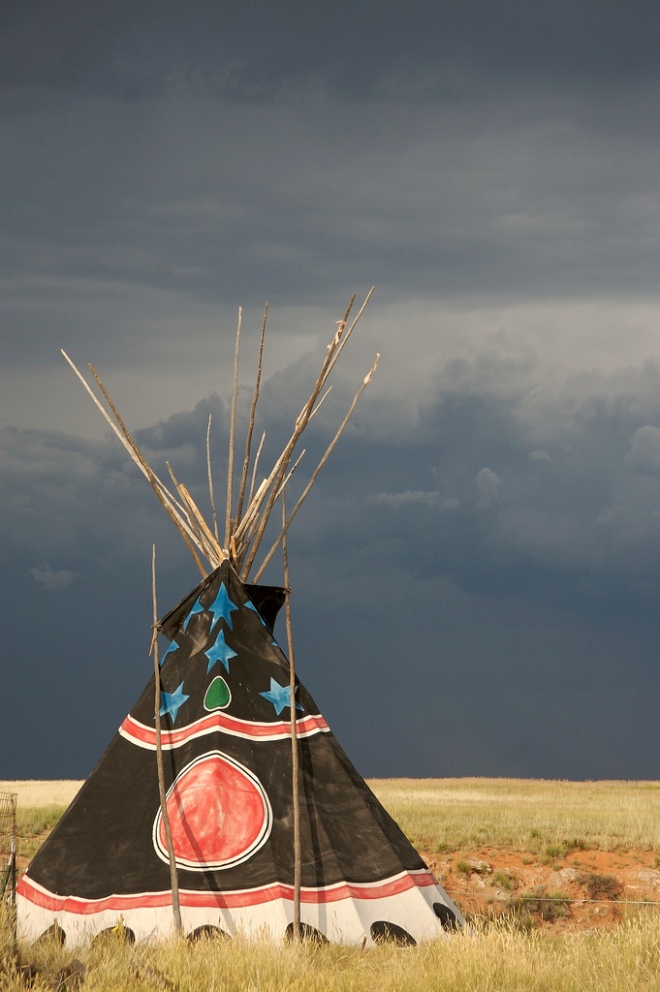
What Can You Do With Dead Bison?
The Native Americans used buffalo for a number of uses other than as food or clothing. In fact, every part of the buffalo was used. My children were fascinated with all the different uses for the random parts of a buffalo.
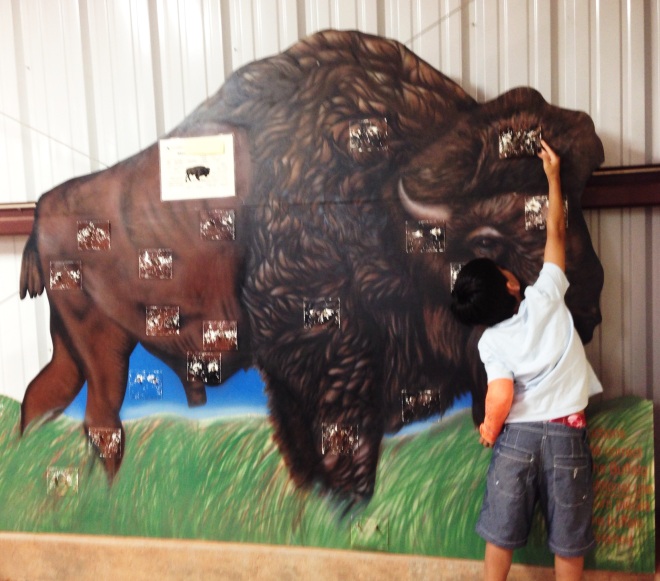
Some interesting facts on bison hunting:
- Several hundred members of a tribe worked together to kill, clean and process bison quickly and efficiently.
- Meat was preserved by curing them in the sun sort of like jerky is today.
- The Native Americans hunted in the autumn in order to ensure there was enough food and materials to get them through the long, harsh winters.
You can pretty much use the entire bison carcass for something. For example:
For little kids, there is a sandbox where they can sift through sand to find arrowheads. It’s entertaining for kids who’ve probably been stuck in a car for hours. You either return the arrowheads or pay a $1 for any you keep.
Details for visiting the Vore Buffalo Jump:
The Vore Buffalo Jump is a short detour off I-90 near the Wyoming and South Dakota border. Easy to find with clearly marked signs, it is open daily during the peak summer months. There is an entrance fee.
There is a visitor’s centre and then the actual pit is a further walk down a ramp. Make sure you see the pit as it’s really cool! Also, there are good restrooms which are few and far between in this part of the world.

